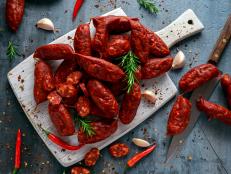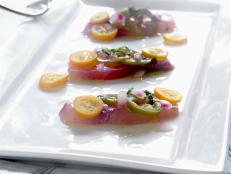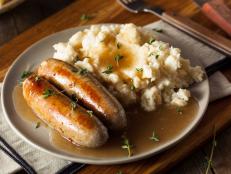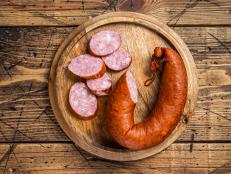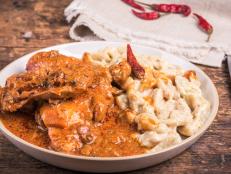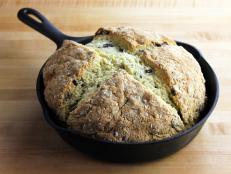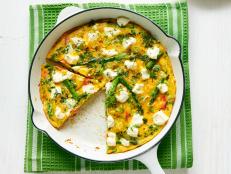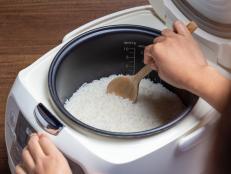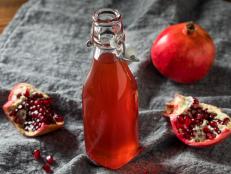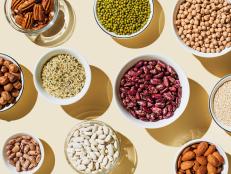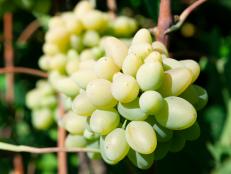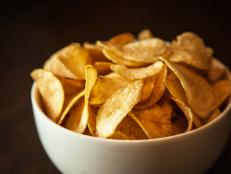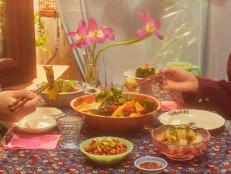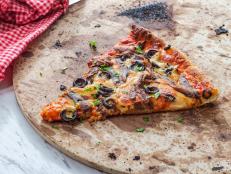Spanish Cooking Glossary
Aceite: Oil
Aceituna: Olive
Adobo: A marinade for meat that usually contains smoked paprika (pimentón), garlic, and vinegar.
Albóndigas: Meatballs
Allioli: Garlic mayonnaise, the Spanish version of aioli. Served with paella, meats, fish, and grilled vegetables.
Arbequinas: Prized tiny, round, light brown olives from Catalonia.
Asado: Roasted or broiled meat.
Asturiana: Blood sausage from the Asturia region.
Azafrán: Saffron. A yellow seasoning made from the stigmas of a purple crocus flower. It adds color and distinct flavor to Spanish rice dishes, particularly paellas. Spain produces most of the world's saffron.
Bacalao: Salt cod.
Bisbe: A large blood sausage from Catalonia.
Boquerones: Mild white vinegar-cured Spanish anchovies.
Butifarra or botifarra: Popular Catalan white pork sausage spiced with cinnamon, fennel seeds, and black pepper. Also popular in Asturias. Butifarra negra is made with pig's blood.
Cabrales: A blue cheese from the mountainous northern Asturias region. One of Spain's best known cheeses.
Calçot: A spring onion similar to a large scallion or a small leek. Traditionally calçots are grilled outdoors during their short season and served with romesco sauce.
Caldo Gallego: A hearty one-dish stew from the region of Galicia, made with beef, beans, and greens.
Camaiot: A butifarra-like pork sausage from the Balearic islands.
Cava: Spanish sparkling wine.
Chilindrón: A cooked dish with a red pepper sauce.
Chorizo: A pork sausage made from lean pork, garlic, paprika, red bell peppers, and red pepper flakes. Not to be confused with Mexican chorizo.
Cocido: A hearty Spanish stew made with meats, vegetables, and beans, usually chickpeas.
Denominación de Origen (DO): Spanish laws that govern wine and grape production and the production of artisanal foods.
Escabeche: A cooked food that is marinated in vinegar-based marinade.
Extremeña: Blood sausage made with chopped meat, potatoes, and pumpkin from high plains.
Fabada: A famous bean and meat stew from the province of Asturias.
Fabes, fabas: Fava beans. The dried version of these large flat beans are famous in the province of Asturias.
Fideos: Noodles, usually thin vermicelli-type. A fideuá is a paella-like dish prepared with noodles instead of rice.
Gazpacho: A cold Spanish soup from the southern region of Andalucia. It is made with tomatoes, stale bread, vinegar, garlic, olive oil and water.
Jamón Iberico de Jabugo: Also known simply as Jamón Jabugo, Jamón Iberico, and Jamón Iberico de Pellota, it is the most prized serrano ham in Spain, made from free-range pata-negra pigs fattened on acorns, and cured in strict temperature-controlled rooms over 3 years. The caviar of cured hams.
Jamón Serrano: Cured mountain ham from Andalusian but used in regional cooking everywhere.
Jerez: Sherry. A fortified wine made from Palomino grapes grown in Andalucia near Jerez de la Frontera. Very popular as an aperitif. Sherries range in flavor from very dry to sweet.
Lomo: Cured pork loin.
Longanissa, longaniza: Pork sausage seasoned with paprika, cinnamon, aniseed, garlic, and vinegar.
Manchego: Spain's best known cheese, made from 100% sheep's milk in the central region of La Mancha.
Marmitako: A one-dish fisherman's stew made with tuna and tomatoes, from the Basque region.
Membrillo: Quince paste. Often served with cheese, especially with Roncal, Iberico and Manchego.
Migas: Fried bread morsels.
Mojo: A spicy uncooked, blended or mortar-pounded sauce typical of the Canary Islands.
Morcilla: Blood sausage stuffed with rice, paprika, onions, garlic, and spices. Used in Asturias.
Ñora pepper: A small red bell pepper that is used dried in soups, sauces (particularly romesco sauce), stews and rice dishes.
Padrón peppers: A small green pepper grown in Galicia. They have a strong sweet flavor, but 1 out of 50 is hot.
Paella: Spain's best-known rice dish, from the region of Valencia, made with short-grain rice in a wide flat pan also called a paella. Authentic paella Valenciana is made with chicken and rabbit. The paellas we are more familiar with contain seafood.
Pebrella: Wild Spanish thyme, grown in Southeastern Spain between Vallencia and Alicante. Thyme or oregano may be substituted.
Picual olive: An Andalusian olive that produces more oil than any other olive in the world l, grown mainly in the province of Jaén.
Pimentón: Paprika. In Spain, it is often smoked.
Piquillo chiles: Long, triangular-shaped intensely sweet red peppers that are used throughout Spain but especially in the Navarro region. They are usually roasted, and are available canned from Spanish specialty stores and online sources.
Pisto: A ratatouille-like vegetable stew made with olive oil, summer squash, onions, tomatoes, and peppers. A specialty of the La Mancha region.
Romesco sauce: A blended, pungent nut-thickened sauce made with roasted peppers and tomatoes.
Salchichón: Smoked sausage made from chopped lean pork and pork fat, salt and black pepper. Known as llonganissa in Catalonia and the Balearic Islands. Also made from acorn-fed pigs (salchichón Iberico).
Salmorejo: A cold soup, much like a gazpacho but thicker, and made mainly with tomatoes and bread.
Sobrasada, sobrassada: Majorcan pork sausage, very soft, flavored with garlic and paprika.
Sofrito: A flavor base for many dishes, made by cooking down a mixture of aromatics such as onion, garlic, and tomato in olive oil until very soft and fragrant.
Tapas: Small plates of foods served all over Spain as appetizers.
Tempranillo: A red grape used widely in wine-making, especially in the Rioja region.
Tortilla: In Spain a tortilla is a flat omelet, the equivalent of an Italian frittata. Tortilla Española, Spain's national dish, is filled with potatoes and onions.
























